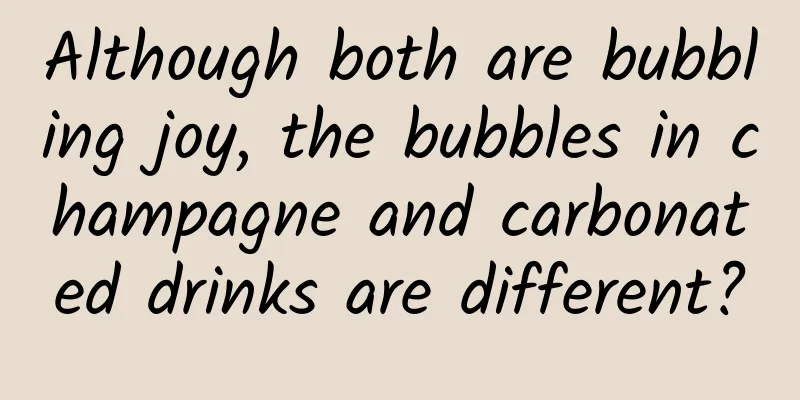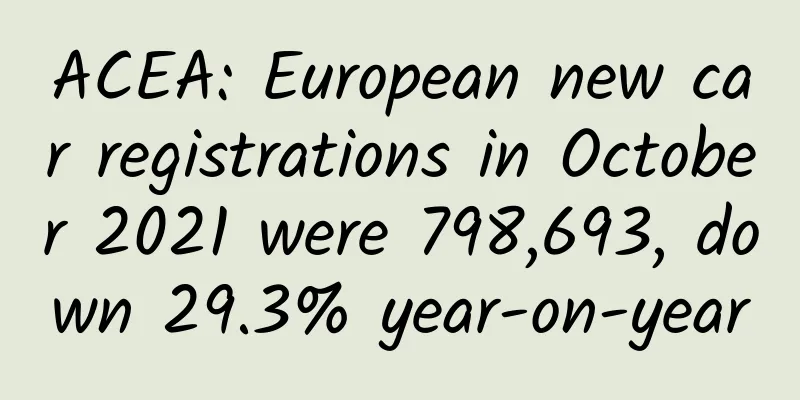Although both are bubbling joy, the bubbles in champagne and carbonated drinks are different?

|
In the cold winter, hot and spicy hot pot and cool carbonated drinks are a perfect match. As the bottle cap is opened, bubbles pop out of the bottle, and after a big sip, you will feel refreshed instantly. Source: pixabay As a popular drink, sparkling drinks are hot-selling all year round. The production and preservation of bubbles contain many scientific mysteries. How much do you know? 1. Production of carbonated beverages and preservation of bubbles Carbonated drinks are usually soft drinks made of water, flavors, pigments, sweeteners and other food additives, and then injected with carbon dioxide. There are two traditional production processes for carbonated drinks: one is to prepare the flavoring syrup, pour it into the packaging container, and then fill it with carbonated water (i.e. water filled with carbon dioxide), which is called the ready-mixed method (double filling method); the other is to mix the flavoring syrup and carbonated water in a certain amount, and then pour it into the packaging container, which is called the pre-mixed method (one-time filling method). Source: Wenzhou Kexin Light Industry Machinery Co., Ltd. Although carbon dioxide dissolved in water is not stable, it has a great cooling effect on beverages : since the temperature in the human body is higher and the pressure is lower than that in the outside world, carbonated beverages will decompose and release carbon dioxide after entering the human body, taking out some heat from the human body and cooling the human body. In addition, soda contains carbon dioxide, and the pressure increases, which can inhibit the growth of microorganisms and cause the death of aerobic microorganisms. Internationally, 3.5~4.0 times the gas content is considered to be the safe zone for soda. Within this range, it can inhibit the growth of microorganisms and extend the shelf life of soda without causing harm to the human body. Source: pexels At the same time, carbon dioxide interacts with other ingredients in soda to produce a unique taste. Different varieties have different tastes, some are strong, some are mild, so the gas content of each variety is different. For example: orange juice soda, the gas content (volume multiple) is 1.5~2.5; cola soda, the gas content is 3.5~4.0; lemon soda, the gas content is 3.5~4.0. If the carbon dioxide content in carbonated beverages is too high, the sweet and sour taste of the beverage will be weakened; if the carbon dioxide content is too low, the carbonated beverage will lose its proper taste. For carbonated beverages of other flavors, excessive carbon dioxide will dilute the unique flavor of the beverage, especially citrus carbonated beverages with low volatile components. Some carbonated beverages have terpenes in the flavors used, and excessive carbon dioxide will also destroy the original fruity flavor and become bitter. 2Champagne production process We often see some people deliberately shaking sealed carbonated drinks, and the liquid will immediately overflow with bubbles after opening the bottle cap. In addition to carbonated drinks, we also see the "gushing out" phenomenon when opening champagne. So some friends may ask: Is the production of champagne and carbonated drinks the same? Source: pexels The production process of champagne is much more complicated than that of ordinary carbonated beverages. It also requires more expensive raw materials and longer production time. The grapes need to be fermented for the first time to produce base wine, and then sugar and yeast are added for the second fermentation. Source of common wine fermentation tank丨National Intellectual Property Administration Unlike ordinary wine, which usually leaves a small opening during fermentation to release the carbon dioxide produced, champagne is fermented in a closed manner so that the carbon dioxide cannot escape and is partially dissolved in the liquid , which takes at least 15 months. For a bottle of champagne, in addition to the quality of the grapes and the fermentation technology, the bubbling effect is also very important. The protein in the wine liquid and yeast can fix some small bubbles, making a clear popping sound when opening, and bubbles shaped like "mousse" appear on the top. This visual effect is very popular among people, and laymen who lack professional wine tasting knowledge will largely judge champagne based on the effect of bubbles. 3. The difference between the bubble form of champagne and carbonated drinks Careful friends will find that in addition to taste and price, the shape and structure of champagne bubbles are very different from those of ordinary carbonated drinks. Why do champagne's bubble chains rise straight up and can be observed stably for a period of time even when poured into a wine glass? But the bubble chains of other carbonated drinks have irregular shapes and are not very long-lasting? Source: Scientific American In fact, the stability of bubbles is affected by the size of bubbles and surfactants . The smaller the bubbles, the faster they rise, and the more easily they are affected by the external environment. The trajectory of movement is easy to deviate, and they are scattered and discontinuous; the larger the bubbles, the more lift they will generate, so that they can move more stably along a straight line trajectory to form a stable foam chain. In addition, in champagne, the so-called surfactant is protein, which is conducive to the adsorption of bubbles and prolongs their existence. When the protein concentration is high (such as the protein in the yeast cells in champagne), the foam chain can exist stably; when the protein is low (such as other carbonated beverages, without adding protein ingredients), the bubbles cannot form a stable structure and are dispersed. Finally, I would like to remind my friends that carbonated drinks are refreshing for a while, but its acidity has an impact on our teeth, which are mainly composed of calcium carbonate, and there is also sugar in the beverage, so drinking a lot for a long time may cause tooth decay! So even in summer, we can drink moderately, which not only enjoys it but also does not affect our health too much. |
<<: The gynecological items in the physical examination are so embarrassing, can I not do them?
Recommend
How to buy real fans on Douyin? Where can I buy real fans on Douyin?
As technology becomes more and more powerful, mob...
The "calcium" gang in the nutrition world cannot do without this "military advisor"
Author: Cui Yihui, registered dietitian, master o...
Using deep neural networks to solve the problem of NER named entity recognition
This article is organized as follows: What is Nam...
What knowledge is needed to develop WeChat Mini Programs? What language is needed to develop WeChat Mini Programs?
It has been more than three years since the launc...
3 tips to increase followers on Zhihu for free!
Many people understand that I often change my ide...
How to solve the problem of promoting two-dimensional games? "Sword of Glory" made a successful demonstration
When it comes to the promotion of two-dimensional...
A condiment that many people can’t stop eating and are addicted to. Thank you, Shanxi people!
For most people, vinegar is probably a condiment ...
How does Baidu Portal check cross-region information?
What promotional information can be found on Baid...
Traditional cultural knowledge supporting Qingming Festival: the structure of the underworld!
Mixed Knowledge Specially designed to cure confus...
Electric Technology Car News: Can a high-end Emgrand GL with a price of 80,000 yuan beat joint venture cars in the compact family car segment?
Emgrand, a name that seems to be full of petty bo...
Are those extremely low-level information flow ads really effective?
The online game advertisement mentioned by the to...
The new advertising law is finally here. If you don’t want your APP to be removed from the shelves, quickly change the app description!
In the 360 developer communication group this a...
Jade Wenchang Tower has the best spirituality
Many students and civil servants place Wenchang P...
Should I eat the rice first or drink the soup first? What you eat first makes a big difference
When it comes to nutrition and health, the first ...
Samsung's Tizen can't shake iOS and Android with its old tricks
After years of hype, we finally saw the world'...









